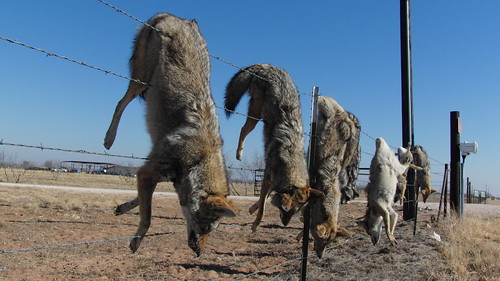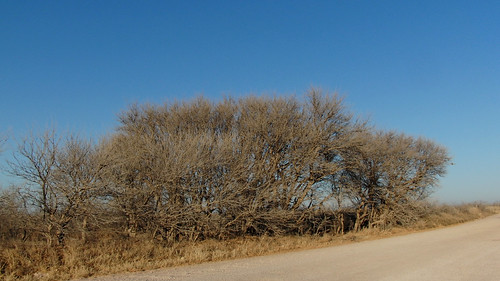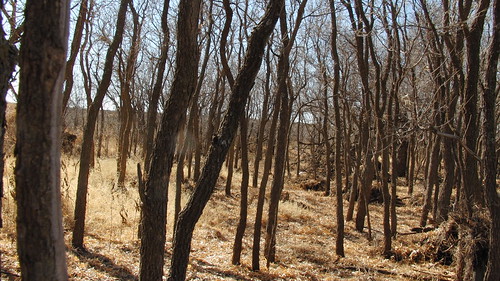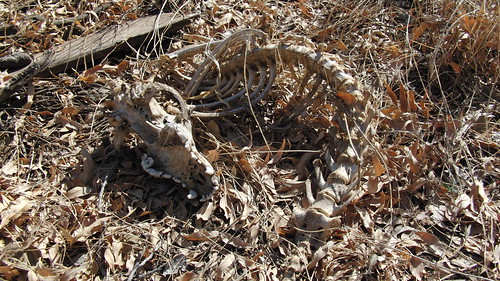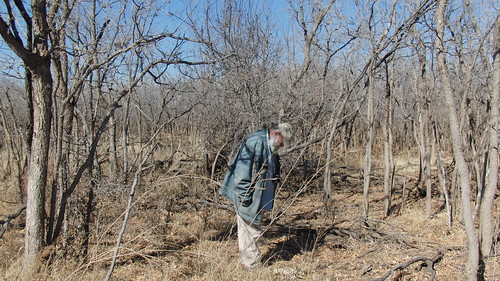Jan 14. Met with an independent oil man for coffee. He was so kind and so generous with his time I wish we had focused more on HOW he sees as a geologist. How he gets a mental picture-map of rocks that delineate both time and space. And how he gambles as an oil man. But I think I perturbed him. I can’t agree that today we have foolproof methodology (cmon now) simply because we have better science and more regulation than in the recent past (emphasis on recent), although vilification of either the oil industry or the environmentalists is sheer idiocy. But it is an industry, and a far more lucrative one than the alternatives currently.
We are the Petroleum Age, and nearly everything we do, wear, move through and with, touch, and ingest is directly influenced or made from petroleum. Rock Oil.
Got a 3 hour Burr Williams Grand Tour of a (relatively small) piece of land south and east of the Fairgrounds Road in Midland. I’d asked to see some spots he liked a lot / found of interest in Midland. First we went in search of the Sandhill Cranes who winter in Texas (half a million of them. They appear in the fossil record 9,000,000 years ago in Nebraska). We hit the salina (a salt water pond endemic to the Llano, that is sometimes wet), where the cranes like to spend their nights, protected from predators. I am guessing these ephemeral ponds should not be confused with the saline dead zones where watery effluent from oil well drilling was left, as those also dry up and look like salinas. We didn’t see any cranes, there, but later saw them wheeling in the sky. They glide, and the gloss off their wings creates an intermittent cloak of invisibility. Then we drove down a gravel road, past a fence limned with dead coyotes and raccoon – vivid. Shoot them coyotes. Of course it doesn’t help, since coyotes regulate their populations: if the adult population goes down, they have more babies. And in times of abundance, they bear less young. Burr told me about Bud Williams, a Stockmanship teacher (who’s often compared to Temple Grandin) who teaches body language and sensitivity in order to more effectively and humanely work with livestock – and above all, to like your animals. He apparently can help reduce the necessity to shoot coyotes: if the herd learns to remain tight knit, coyotes don’t nab individuals. Then we stopped amidst a small copse of bare soapberry trees. Come, say, October 10, these trees will be full of monarch butterflies as they migrate through here. Burr says calling places “flyways” is outdated. Think of it more as a sheetwash. What? The way water runs over the land, here in Texas. A blur, not a path. I see the point of this: Treat it like a trail, you can do what you want everywhere else. Treat it like an ambient phenomena, and you have to deal more holistically. Then we visited a pocket forest of soapberry. Coyote skeleton, curled up like sleeping, rotted where it was shot. These tiny forests host deer, and grey foxes who climb, and a litany of birds. We also saw what Burr said was the largest oak forest in the world, a forest of shin-high oaks (called Shin Oak) with extraordinarily large acorns that not only are tasty, but whose tannin makeup is such they only have to be washed once. It’s thought that Native Americans came to harvest them and take them away… No one lived on the Llano; it was a commons, a place to trade, move through, hunt buffalo, as you can see on this map detail from the late 1800’s it’s an elevated table land without wood or water. We also passed a prairie dog town, albeit a small one, field-sized. Estimates were over a billion in the 19th century. Giant earthworms Burr said. Horsemen don’t like them but they are amazing aerators. We finished up near the waste treatment facility. Too alkaline for much, but very pretty (see panorama below).
Creosote smells like asphalt.
Mountain laurel is an entheogen.
Escaped ornamentals have taken hold here.
Johnson grass followed the railroad trail, because the mules like it.
Salt cedar is an awful invasive.
And tumbleweed (Russian Thistle), that probably came with flax from the Ukraine, has fireproof seeds and a fool proof method of dispersal, unlatching itself wholesale and rolling its way across the landscape.
